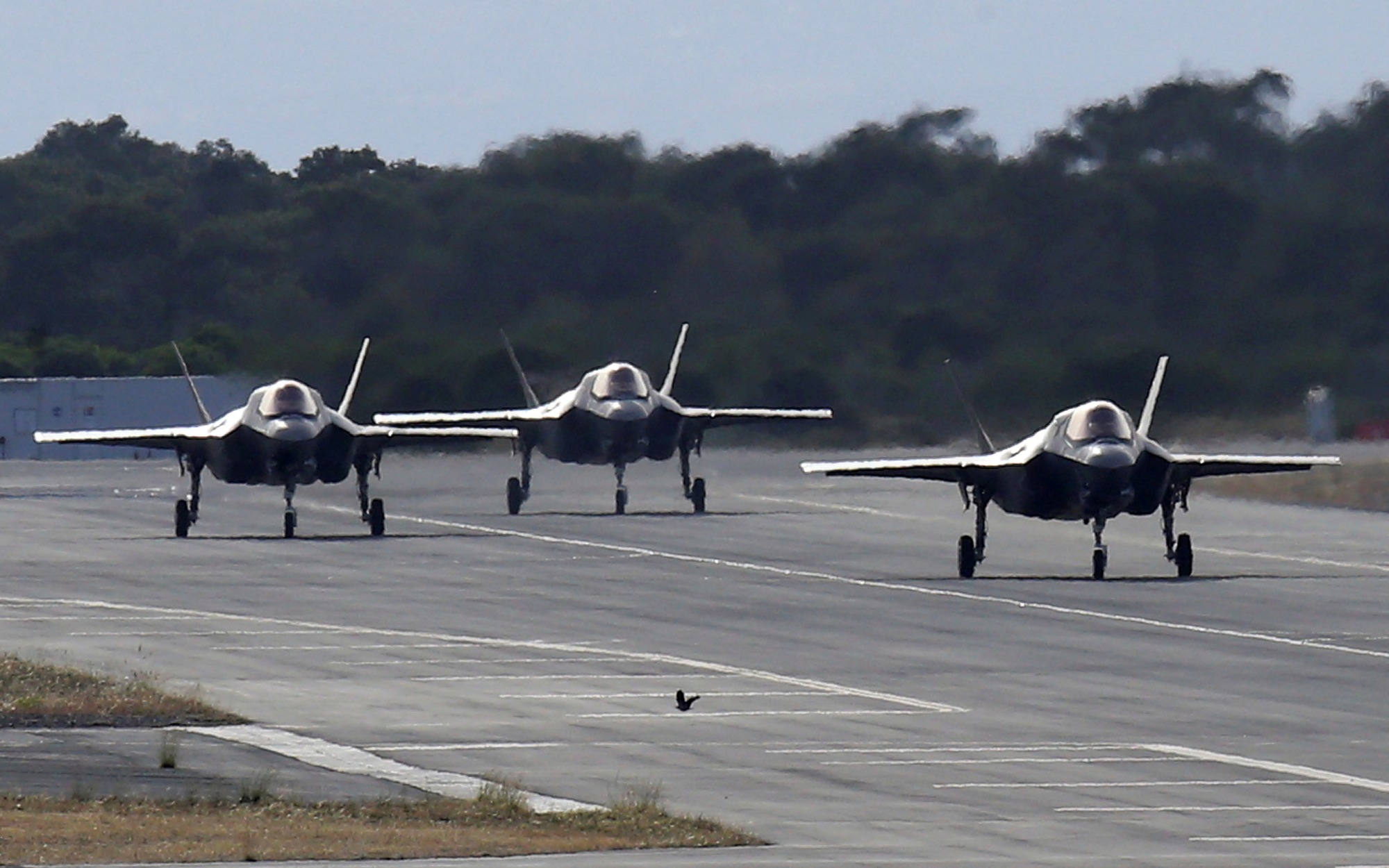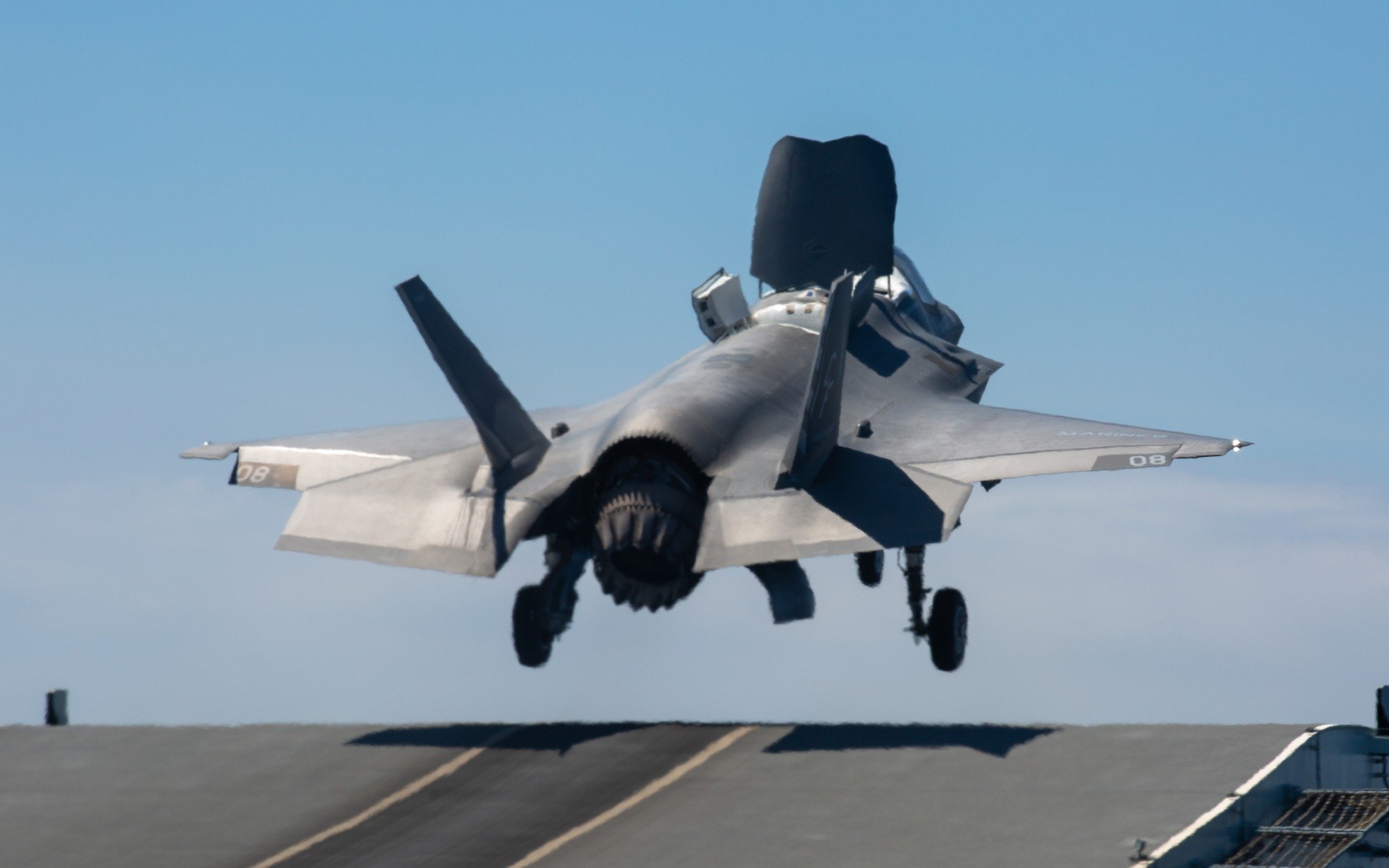F-35B Lighting Aircraft Carriers: The U.S. Navy's 'Secret Weapon' Against China
The Navy is converting amphibious assault ships, like the USS Bataan, into "lightning carriers" capable of deploying F-35B Lightning II jets.
Summary: In a potential conflict with China in the Indo-Pacific, the U.S. Navy's aircraft carriers would play a crucial role. Although China has a larger naval force, the U.S. holds a significant advantage with its 11 supercarriers compared to China's two, soon to be three. The U.S. Navy's Nimitz-class and Ford-class carriers possess superior capabilities. To further bolster this advantage, the Navy is converting amphibious assault ships, like the USS Bataan, into "lightning carriers" capable of deploying F-35B Lightning II jets. These modifications, including a stronger deck and new electrical system, will enhance the Navy's operational flexibility without adding new supercarriers.

U.S. Navy's Advantage: Aircraft Carriers in a Conflict with China
In a potential future conflict with China in the Indo-Pacific, much would depend on the performance of aircraft carriers.
Right now, the Chinese military might have the overall bigger naval force, but the U.S. Navy has a clear advantage over its Chinese adversary when it comes to carriers.
The Navy can field 11 supercarriers to the Chinese Navy’s two (a third is undergoing testing). Moreover, the Navy’s 10 Nimitz-class and one Ford-class flattops bring vastly better capabilities to the table than the Chinese navy’s vessels, one of which is a refurbished Soviet carrier. This balance of power won't last forever – Beijing is aggressively designing and building a more modern fleet of aircraft carriers. But for the time being, the Navy has an undeniable advantage.
It also has the means to increase that advantage.
Lightning Aircraft Carriers for F-35B Against China
The Navy can muster additional aircraft carriers in the form of amphibious assault ships. Designed to support the amphibious operations of the U.S. Marine Corps, these ships can carry a squadron of F-35B Lightning II stealth fighter jets, thus turning them into light aircraft carriers similar to the Casablanca class the Navy used in World War Two.
The F-35B is the short take-off, vertical landing (STOVL) version of the Lightning II. It can take off and land like a helicopter. This STOVL capability is great for expeditionary operations where space and resources might be more limited.

Upcoming modifications to the USS Bataan amphibious assault ship show how the Navy is looking to grow its aircraft carrier fleet without adding any new supercarriers.
According to the Navy, the conversion process will keep the USS Bataan out of the operational roster for around 1.5 years.
"We have to completely revamp the flight deck," Capt. Trace Head, the ship's executive officer, told Business Insider during Fleet Week 2024 in New York City.
Along with a stronger deck that can withstand the heat and force of the F-35B’s STOVL operations, the USS Bataan will require a new electrical system to meet the demands of the latest aircraft.
"As we transition from the Harrier to the F-35 on these ships, there's certain maintenance things that have to be done, and that's all planned and programmed," Marine Forces Command leader Lt. Gen. Brian Cavanaugh said.
Before coming to Fleet Week 2024, the USS Bataan took part in Operation Prosperity Guardian against Houthi insurgents in the Red Sea.
Head remarked that had the warship been operating with F-35B fighter jets like a lightning carrier, it would likely still be in the area protecting maritime traffic and U.S. national security interests.
"The next deployment, we will be the most advanced amphibious warship in the Navy coming out of the shipyard," he added.
About the Author
Stavros Atlamazoglou is a seasoned defense journalist specializing in special operations and a Hellenic Army veteran (national service with the 575th Marine Battalion and Army HQ). He holds a BA from the Johns Hopkins University and an MA from the Johns Hopkins’ School of Advanced International Studies (SAIS). His work has been featured in Business Insider, Sandboxx, and SOFREP.
All images are Creative Commons.


